Riding a Bike Versus The Hard Part
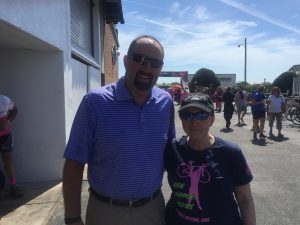
Lisa Frank, co-founder of YSC, Tour de Pink co-founder and three-time breast cancer survivor.
2 weeks ago I mentioned to a prominent cancer researcher at a prominent cancer center in the United States I would be completing 2 200-mile bike rides over the next few weeks with several hundred other folks to raise awareness and funding for breast cancer. He questioned why I would do such a thing – ride a bike on both coasts, peddling for hours and hours, perhaps in poor weather, poor road conditions, heavy traffic areas and be responsible for getting to and from the venue as well as shipping the bike there and back, in time for both rides. Then there is the issue of actually training for the ride and the harder part, raising enough funding as to accomplish that goal that each rider strives towards for your team. Honestly, first and foremost, it was part of an overall health strategy along with diet and portion control and moderation and being 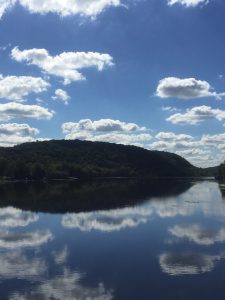
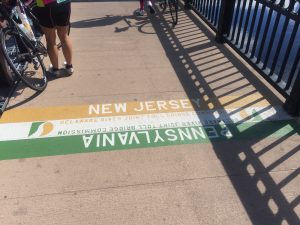 more active. The bike offers low impact but high output activity on my increasingly worn knees from running, ice hockey and skiing. Secondly, perhaps it was a way to “give back” to help support an organization that organized these rides and do my part to help add resources to the fight. With a steady number of rides around South Charlotte and South Carolina in the Summer heat and humidity, I was able to get comfortable on the bike for 40 or 50 miles at a time and string together several rides like that in a week. I completed a 62-mile ride about a month ago, probably the longest I had rode in many years, since completing a century ride about 7 years ago along the Iowa-Minnesota border. Until last Saturday I hadn’t rode 100 miles and it felt good to not get a flat tire and get checked in to the hotel to watch some college football.
more active. The bike offers low impact but high output activity on my increasingly worn knees from running, ice hockey and skiing. Secondly, perhaps it was a way to “give back” to help support an organization that organized these rides and do my part to help add resources to the fight. With a steady number of rides around South Charlotte and South Carolina in the Summer heat and humidity, I was able to get comfortable on the bike for 40 or 50 miles at a time and string together several rides like that in a week. I completed a 62-mile ride about a month ago, probably the longest I had rode in many years, since completing a century ride about 7 years ago along the Iowa-Minnesota border. Until last Saturday I hadn’t rode 100 miles and it felt good to not get a flat tire and get checked in to the hotel to watch some college football.
Still, the cancer researcher didn’t understand the premise. He didn’t see the “value” of making and taking the time to do this for nearly the past 6 months. He suggested to me “Next year, write these people a check for $5,000 and call it even.”
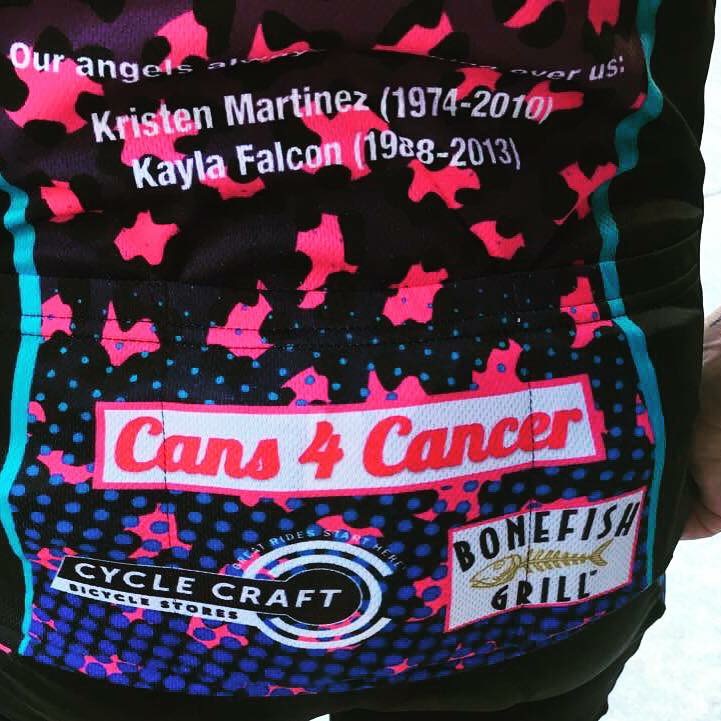 I will say this, the 3 day bike ride, the experience, the sun and wind and warm diluted Gatorade at the rest stops and the occasional near miss with another cyclist or car or obstacle was nothing as compared to the experience after the ride, at breakfast and dinner and in the lobby. For many riders, they were riding for someone, perhaps in honor of someone who is still alive, or in many cases, someone who had passed. Some of these women did the ride a year ago. This year people were riding in their memory. Standing around a pick up truck after the first day drinking cold beverages I heard about the sisters and sister-in-laws and mothers and daughters who people made sure to remember. On their bikes, their jerseys and in their hearts. Dinner as a group was filled with more stories from caregivers and families and friends. Honestly, this was harder than peddling a bike, even into a headwind, with sore legs and bottom. There were few dry eyes at the tables. It made riding a bike seem pedestrian compared to what some people face and the toll it takes on their families and ultimately their life. It makes you appreciate the health you have, the ability you have to ride for others who cannot. Those 50 or 60 or 100 miles are quickly forgotten when you hear about much longer journeys and obstacles that aren’t solved by shifting gears or conveniently pulling over for some carbohydrates and hydration.
I will say this, the 3 day bike ride, the experience, the sun and wind and warm diluted Gatorade at the rest stops and the occasional near miss with another cyclist or car or obstacle was nothing as compared to the experience after the ride, at breakfast and dinner and in the lobby. For many riders, they were riding for someone, perhaps in honor of someone who is still alive, or in many cases, someone who had passed. Some of these women did the ride a year ago. This year people were riding in their memory. Standing around a pick up truck after the first day drinking cold beverages I heard about the sisters and sister-in-laws and mothers and daughters who people made sure to remember. On their bikes, their jerseys and in their hearts. Dinner as a group was filled with more stories from caregivers and families and friends. Honestly, this was harder than peddling a bike, even into a headwind, with sore legs and bottom. There were few dry eyes at the tables. It made riding a bike seem pedestrian compared to what some people face and the toll it takes on their families and ultimately their life. It makes you appreciate the health you have, the ability you have to ride for others who cannot. Those 50 or 60 or 100 miles are quickly forgotten when you hear about much longer journeys and obstacles that aren’t solved by shifting gears or conveniently pulling over for some carbohydrates and hydration.
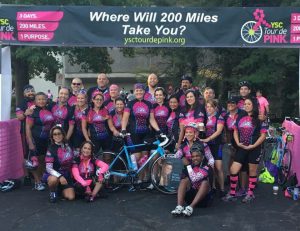
Our team “Why We Ride” raised over $100,000! See you all next September!
As a pathologist, these experiences remind me that “every slide is a life” in a way you cannot see in a laboratory alone. And something I would not have experienced had I simply mailed a check and “called it even”.

































